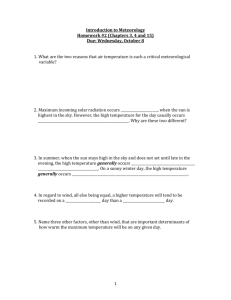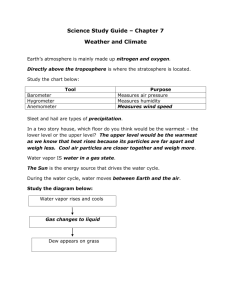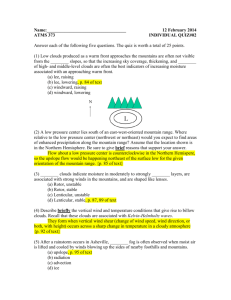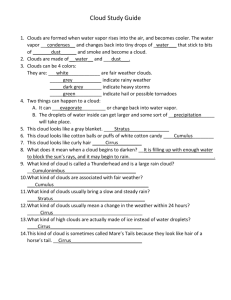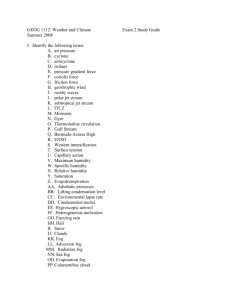Treasure Hunt#2
advertisement
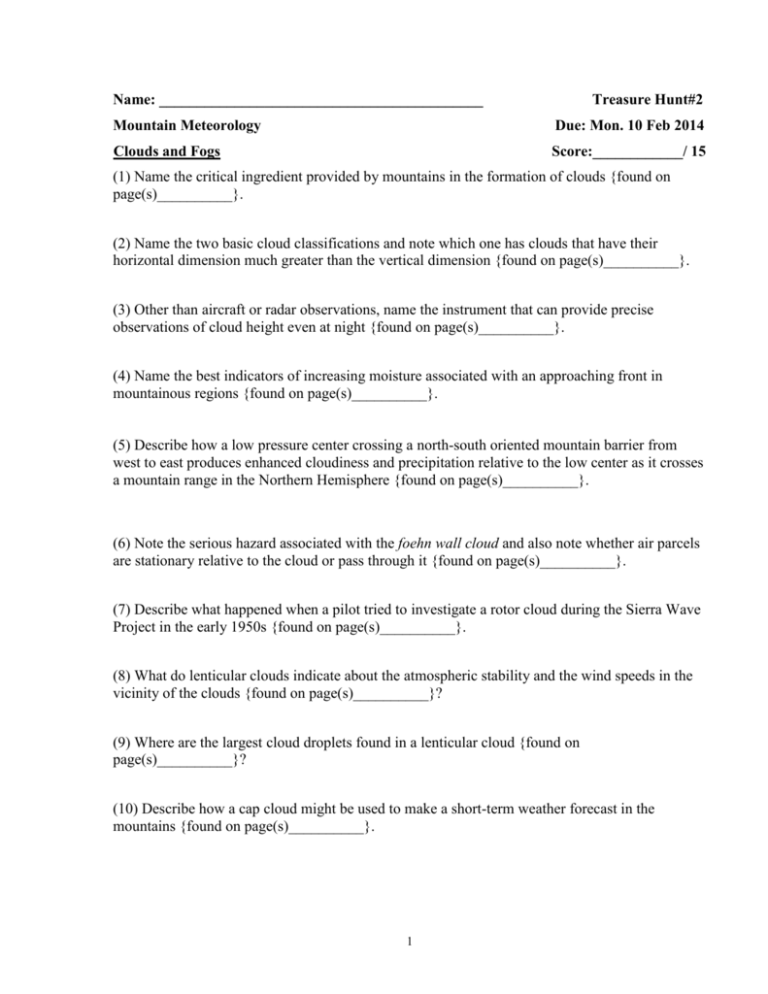
Name: ___________________________________________
Treasure Hunt#2
Mountain Meteorology
Due: Mon. 10 Feb 2014
Clouds and Fogs
Score:____________/ 15
(1) Name the critical ingredient provided by mountains in the formation of clouds {found on
page(s)__________}.
(2) Name the two basic cloud classifications and note which one has clouds that have their
horizontal dimension much greater than the vertical dimension {found on page(s)__________}.
(3) Other than aircraft or radar observations, name the instrument that can provide precise
observations of cloud height even at night {found on page(s)__________}.
(4) Name the best indicators of increasing moisture associated with an approaching front in
mountainous regions {found on page(s)__________}.
(5) Describe how a low pressure center crossing a north-south oriented mountain barrier from
west to east produces enhanced cloudiness and precipitation relative to the low center as it crosses
a mountain range in the Northern Hemisphere {found on page(s)__________}.
(6) Note the serious hazard associated with the foehn wall cloud and also note whether air parcels
are stationary relative to the cloud or pass through it {found on page(s)__________}.
(7) Describe what happened when a pilot tried to investigate a rotor cloud during the Sierra Wave
Project in the early 1950s {found on page(s)__________}.
(8) What do lenticular clouds indicate about the atmospheric stability and the wind speeds in the
vicinity of the clouds {found on page(s)__________}?
(9) Where are the largest cloud droplets found in a lenticular cloud {found on
page(s)__________}?
(10) Describe how a cap cloud might be used to make a short-term weather forecast in the
mountains {found on page(s)__________}.
1
(11) If a banner cloud is found trailing from the east side of a mountain peak, from which
direction must the winds be blowing {found on page(s)__________}?
(12) Name the type of atmospheric wave in which billow clouds form {found on
page(s)__________}.
(13) Describe the cause of the optical effect known as the halo {found on page(s)__________}.
(14) Which mountain ranges in the U.S. average more than 80 heavy fog days per year {found on
page(s)__________}?
(15) List the four types of fogs and describe the most likely type of fog to be found in the
Swannanoa River Valley, giving brief supporting reasons for the most likely type of fog {found
on page(s)__________}.
2




